1st day in London
- soniamelodias

- Jan 15, 2019
- 13 min read
Updated: Jan 16, 2019
September 7, 2018, our first day in London.
Gatwick Airport is the second largest and busiest airport in England, just after Heathrow Airport.
We had the opportunity to experience that fact, because we were forced to wait for orders to land for about half an hour, given the excess flow, in terms of air traffic. It is no coincidence that this airport is considered the 22nd busiest airport in the world and the 7th, in terms of international passengers.
It is located in Crawley, West Sussex, 46 km south of London, so we had to catch a train into the city center.
Our first stop was Victoria Station, a multi-modal station of the London transport system, which serves trains and subway.
In this brief stop I could perfectly feel the frenetic pace of the city and also its diversity and multiculturalism, both of which are totally overwhelming.
Our first trip on The Tube was made towards Earl's Court Station.
If you go to London and need to ask for information about the subway do not ask for the subway! Although it is a correct translation, Londoners do not recognize the terminology (I´m talking from my own experience...)
The tube is, and always will be, "The Tube".
Relatively easy to use, very fast and extremely effective, it is also the most economical way to move around. We purchased an Oyster Card, an electronic travel card, used in the London Metropolitan Public Transport system, which gives discounts on the price of travel.
After leaving our suitcases at the hotel we started to follow the guide that I had made and the first place to visit was the Tower of London.
The Tower of London is one of the main attractions of the British capital.
Built on the banks of the River Thames in 1078, by William, The Conqueror, the fortress has a history full of curiosities, including, one involving crows protected by a Royal Decree.
The Tower of London was once House of the Currency, Kingdom Animal Show and even a prison, place of executions and torture. Today it is the home of the Crown Jewels (although they are on display, the Crown Jewels are still used by Queen Elizabeth II in important national ceremonies, all the objects that are still in use have a warning that says: "In use" ), it is also a UNESCO World Heritage Site and one of the most visited places by tourists wishing to discover about the history of London.
Currently, the place does not only present a tower, but 20, erected throughout numerous reigns.
This is one of the most expensive tickets in London, it is also one of the royal palaces in London. It was built to terrorize the local population during the Norman Invasion and today still haunts the tourists who visit it.
The main function of the Tower today is not to serve as a residence for the Royal Family, but rather to give shelter to the Crown Jewels, an invaluable collection that gathers some of the greatest treasures of the Royal Collection, such as cedars, crowns, rings, robes and other jewels.
In addition to the jewelry exhibition, the Tower of London is also a tourist attraction because of its ancient history, during which it served as fortress, zoo, mint and habitat of crows very important for the integrity of the United Kingdom.
White Tower: for many, it is the Tower of London itself, as it was the first of the buildings. It was the fortress erected by the Normans to give a clear message to the population: obey the new King.
Almost a thousand years later you can still see what Norman architecture was like, get to know the Royal Armor Collection and enter an 11th-century chapel, St John The Evangelist.
The basement of the White Tower was a famous torture site, where famous people such as, Guy Fawkes (who attempted to blow up Parliament during the Gunpowder Conspiracy) and Jesuit priest John Gerard were tortured and executed.
The Tower of London even housed 600 animals donated by other kings and world leaders. In practice, it was the city's first zoo, with lions (those from Trafalgar Square), monkeys, elephants and more. Even a polar bear, who had the right to catch some fish on the Thames, lived here.
One of the most macabre aspects of a visit to the Tower of London is to understand how brutal the history of this fortress is. There were public executions on Tower Hill, and inside the Tower men and women who dared to turn against the King were imprisoned and tortured.
In the Execution Site, inside the courtyard of the Tower of London, executions of the most important prisoners were carried out, either by proximity to the King or popularity with the people, two factors that led the unfortunate to be beheaded there.
Today the visitor can see a memorial in honor of the victims of the past. Three of them are well remembered:
• Anne Boleyn, Henry VIII's second wife
• Catherine Howard, Henry VIII's fifth wife
• Lady Jane Gray, Queen for nine days.
An old legend read: "If the Tower of London ravens are lost or fly away, the Crown will fall and Britain with it." Concerned about the fate of the crown, Charles II, son of the beheaded Charles I and first king from the period of exception, decreed that the six ravens of the Tower of London would have protection and permanent care.
Since then, the most spoiled characters in the Tower of London are not the Crown Jewels, but the crows. They wander in the distance accompanied by a vigilant bodyguard: the Raven Master, whose only function is to care for and treat the birds.
Each of the crows of the Tower has a colored ribbon, which indicates their identity.
It is allowed to take photos, but it is better to keep some distance. The birds of the Tower of London are not pets, and the Raven Master is not at all happy if we give them food.
The Beef-eaters, Keepers of the Tower of London, warn vehemently that crows may feel threatened when visitors offer them food. In addition, the feed is controlled: raw meat twice a day and, on special occasions, a mouse.
The guards of the Tower of London are the Yeomen Warders, popularly known as Beef-eaters, which means meat eaters.
Beef in English is meat, eaters is "eater", "devourer". The origin of the name is not consensual, but there are some explanations that give some signs of where this unusual nickname may have arisen for a body of royal guards.
It is said that the first reference to the name was made by the great Duke of Tuscany Cosimo III, de Medici. The Italian nobleman on a visit to London in the seventeenth century would have made a mention of the Tower guards noting that the daily ration of meat they ate was particularly large, calling them beef-eaters.
The term may also have been derived from the French designation "buffetier", which was the name given to the French royal guards who protected and tested the food of the kings of France (although these were not the functions of the English beef-eaters).
There are also those who comment that during wartime these soldiers would be entitled to a larger portion of flesh than ordinary Londoners.
After passing by the London Tower we proceed to the Tower Bridge, through a pleasant walk along the Thames River.
We had planned to take a boat trip, but we did not have enough time...
A particularly interesting circuit is the one that leaves from Westminster Pier and goes east, covering several views. This marks the point where the river enters central London and runs between Lambeth Palace and the Houses of Parliament, past the London Eye and Southbank Center, making a turn north through Victoria Embankment towards the Millennium Bridge, which links St Paul's Cathedral to the Tate Modern.
Inaugurated in 1894 on the Thames River, the Tower Bridge was built next to the Tower of London and has become, over the years, one of the most visited and photographed sights of the city of London.
It has featured in numerous films such as "The Mummy Returns" and "007 - The World Is Not Enough", and has turned 120 years in 2014.
This important monument is made of rock. It is 244 meters long and is composed by two towers, each one with 65 meters high. Its architecture follows the features of the Tower of London. Every day, it is crossed by 40 thousand people, counting individuals in vehicles and on foot. On average, the bridge rises a thousand times a year for boats on the Thames River.
It was inaugurated in 1894 by the Prince of Wales, Edward VII. The construction of the bridge became necessary, since the narrow London Bridge was no longer enough to allow the crossing of 20 thousand vehicles, in the city in ascension, in the XIX Century. The style similar to that of the Tower of London was a requirement in its construction. The works began in 1886 and counted on more than 400 workers.
Next stop: City Hall, a glazed, modern building designed by the architect Sir Norman Foster. It is the office of the Mayor of London and the administrative body of the capital, the London Assembly.
The visit is free, but we are only allowed to climb to the 2nd floor, although the real attraction is the panoramic floor at the top, the Scoop, an outdoor amphitheater that has 800 places for events in the summer.
The next monument on the guide was the HMS Belfast, a former Royal Navy ship that was turned into a museum to tell the story of its adventures as one of the most powerful combat vessels during World War II.
Permanently anchored on the South Bank of the Thames River in London, it shows the visitor how the sailors lived and how the gears, the machinery and the operating room worked during battles.
After passing the HMS Belfast, we left the London riverside and headed for The Shard.
The Shard is a skyscraper that redefined the London's skyline. It opened for visits on February 1, 2013, and was heavily awaited by Londoners and tourists.
After a quick ascent of elevator, everyone surrenders to the most commented view of the city: The View From The Shard. Not to be missed: the 360º views of the 69th and 72th floors are breathtaking!
Absolutely mandatory for those in love with London.
The "glass shard", is a project of the Italian architect Renzo Piano (Center Pompidou, Paris / Potsdamer Platz, Berlin).
Today it is the tallest building in the European Union. But, according to the architect himself, it is not the height that matters. What he intended with this project was to produce a new point of reference for the city. A symbol, on the south side of the river, away from the traditionally richest area. The building is all glass so as to integrate into the landscape and reproduce the "temperament" of London every day. It reflects the city and its climate.
With 87 floors (310 meters high), it is divided between offices, residential apartments, restaurants and even a resort hotel. It is the first tall building in London that has an open space for public visits.
The building is part of a complex called the London Bridge Quarters. The entrance to the public is next to the entrance of London Bridge tube station. The station and ground floor of the building are integrated, making it clear that the intention is not to exclude anyone, nor to appear elitist. It is a space to be enjoyed by tourists, locals and workers, since approximately 5000 people work here.
After visiting The Shard on the outside, we headed to Southwark Cathedral and to the Borough Market.
Southwark Cathedral is the oldest Gothic church in London, and was rebuilt in 1212. It is estimated to have been founded in the year 606 AD. It is not included in the traditional tours of the city, as it competes with St. Paul's Cathedral and Westminster Abbey. But the decor, the ornaments, allied to the location, near the London Bridge, and the free ticket do not disappoint visitors.
There is a lovely resident cat named Doorkins, and if you´re lucky like us, you´ll get to watch him peacefully taking a nap, not minding about the innumerable people who visit the church.
Getting to the Borough Market is very easy: you just have to get out in the London Bridge tube station and cross Borough High Street to find it. It is next to Southwark Cathedral.
It´s a delightful fair/street market in the heart of London, particularly tasty because it is dedicated to food and drink, especially freshly prepared food and drinks.
The prices are not the most affordable, but believe me it's worth it, because here you find the most incredible delicacies. The hardest part is choosing.
After visiting other markets of the genre, in Rome and Barcelona, this was decidedly the one that left us wishing we could taste everything.
It´s terribly sad that this place has not escaped unharmed from the scourge of terrorism, because it is truly a place full of life, color, smell, movement... Three terrorists from the London attacks of June 2017 rushed here, and they attacked several people with blades before being shot dead by armed police. This happened after they fled a vehicle on the London Bridge.
After lunch we continued our planned excursion with Shakespeare´s globe Theater which is an open-air theater in the same way as the arenas in which the author, who gives his name to the place, used to develop his pieces.
In fact, the theater was built quite close to the former Globe Theater, the author's stage in London, demolished in 1644.
The original Globe Theater was built in 1599 by a theater company to which Shakespeare belonged. In 1613, the building was destroyed by fire, in an essay for the play Richard VIII. The following year the arena was rebuilt, but in 1642 it was closed due to the public pressure of the Puritans, a majority in the region at the time. Two years later, the Globe Theater was demolished.
In the 1970s, American director and actor Sam Wanamker founded the Shakespeare Globe Trust, a group that aimed to rebuild a company similar to Shakespeare's closed theater. The task seemed impossible with 20th century architecture, but Wanamaker persisted and finally the Shakespeare´s Globe was opened to the public in 1997, very close to the site of the former Globe Theater.
The Millennium Bridge is a pedestrian suspension bridge, made of steel, located in the city of London. It was opened to the public in 2000. It crosses the Thames River, joining the Bankside area with the City of London, more specifically connects the Tate Modern to St Paul's Cathedral. It is situated between the Southwark Bridge and the Blackfriars Bridge. It was the first to be built in the city since the Tower Bridge in 1894. It is owned by Bridge House Estates, a charitable foundation which also oversees its maintenance and is overseen by the City of London Corporation.
Construction began in late 1998, on the project of the architect Norman Foster, but the main works began only on 28 April 1999. The total cost of the bridge was £18.2 million, £2.2 million more than which had been announced.
The bridge was inaugurated by the Queen, on 9 May 2000 but, due to instabilities and vibrations, was shut down only two days later. On occasion, the bridge was nicknamed by the English of "Wobbly Bridge".
Resolved the structural problems, it opened to the public on February 22, 2002. It is currently crossed by thousands of people daily.
The bridge made an appearance in the movie "Harry Potter and the Half-Blood Prince", where it is destroyed by the Death Eaters at the beginning of the film.
Tate Modern is one of the largest museums of modern and contemporary art in the world. Opened in 2000, on the banks of the Thames, in the old Bankside Power Station, facing the Millennium Bridge, on the opposite bank of St Paul's Cathedral, and is part of the Tate group, a set of four art galleries.
The works displayed on the seven floors of Tate Modern include such great names as Pablo Picasso, Salvador Dali, Piet Mondrian, Claude Monet, Joan Miro, Jean Arp, Umberto Boccioni, Giorgio de Chirico, Natalya Goncharova and many other great artists. It´s free and unless you really don´t have time you should not miss it!
St Paul's Cathedral is not only a tourist landmark of great historical importance, but also the seat of the Bishop of London. Its notoriety increased in 1981, when Prince Charles married here with Princess Diana. Its beautiful dome, designed by Sir Christopher Wren, is one of the largest in the world, in fact, the cathedral's dome is the second largest in the world after St. Peter's in Rome.
At the highest point of the City of London, where it all began, St Paul's Cathedral is one of London's most important churches. Over the centuries, it has housed some of the most important events in the British capital. Among them are the funerals of Lord Nelson, the Duke of Wellington, Sir Winston Churchill and Margaret Thatcher, Queen Victoria's Jubilee celebrations, World War I and World War II announcements, Charles and Diana's marriages and the Diamond Jubilee of Queen Elizabeth II.
The interior of St Paul's is as breathtaking as its exterior, and ticket holders have the right to climb the church dome, visit the chapels, the gallery of whispers, the tombs of British heroes such as Christopher Wren and Lord Nelson, and understand each of the liturgical components, with a multimedia guide, included in the value of the entrance. However, photographs within the church are not permitted.
Built in the 12th century, the Cathedral was erected in the same place as the first church in England, made of wood in the year 604 AD, but destroyed in a fire in 675.
The church underwent several stages of construction and reconstruction after numerous fires (it was again destroyed in the Great Fire of London in 1666). Until, in 1670, the architect Christopher Wren took over the works and started everything from scratch.
Inside, St. Paul's Cathedral features paintings, sculptures and carvings of various artists from the time it was built.
In 1940, an intense German bombing, which lasted 57 consecutive days, did not affect the Cathedral. Later that year, a time bomb capable of destroying the entire church was found and neutralized. In the same year, another bomb was not disarmed in time and exploded, but outside the cathedral.
The Museum of London features nine free galleries, which tell the story of London from its earliest days, before the Roman invasion and the name Londinium.
One of its major attractions is the model that recreates the great fire of 1666. The space was inaugurated in 1976 and has varied collections, from prehistoric times, Romans, Tudor and Stuart governance, passing through clothing from different eras, photographs, old paintings and other works of art that marked certain eras.
Well worth it for anyone who is passionate about London and its history.
Since the 12th century, Guildhall is the administrative center of the City of London, the Square Mile, in the city's financial district.
The place was occupied, in Roman times, by the largest amphitheater of Britain. The current building began to be built in 1411. It is the only non-church stone building to have survived the Great Fire of London in 1666. The complex contains several historic spaces such as the great hall, medieval crypts, old library and countless memorials in honor of heroes such as Admiral Nelson and Winston Churchill.
The last monument we visited on our first day in the city of London was actually named The Monument.
It is a stone tower of 61.5 meters in height, in Roman Doric style, located near the London Bridge. It aims to remember the disaster of the Great Fire of London and celebrate the complete reconstruction of the city. It began to be constructed in 1672, being finished in 1677.
The Monument was the tallest stone pillar in the world.
It was designed by the architect Sir Christopher Wren, also responsible for St. Paul's Cathedral, and his colleague, Dr. Robert Hooke. They developed several sketches. The chosen one contained, at the top, an urn from which flames emerged, which symbolized the fire. Just below, a viewing platform. At the base, a sculpture.
After six suicides, between 1788 and 1842, the British government decided to suspend the visitation to the platform and "close it" like a cage.
#toweroflondon #towerbridge #cityhall #hmsbelfast #theshard #southwarkcathedral #boroughmarket #shakespeareglobetheater #tatemodern #millenniumbridge #stpaulcathedral #museumoflondon #themonument #guildhall
<a href="https://www.bloglovin.com/blog/19747679/?claim=p75djybup23">Follow my blog with Bloglovin</a>



















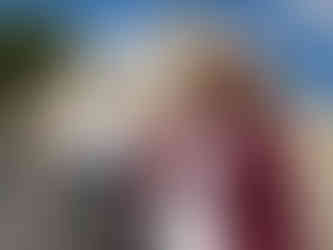
























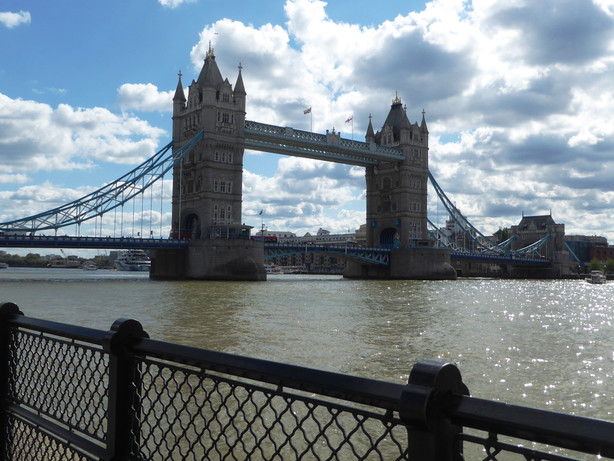

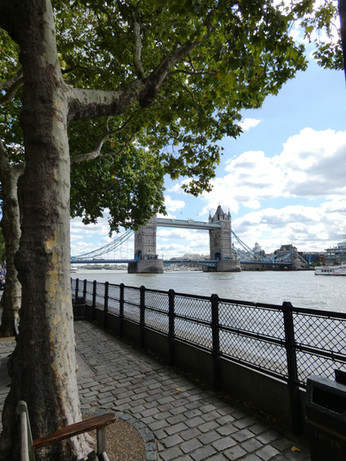








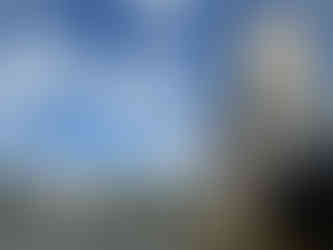

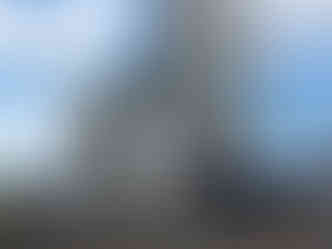

















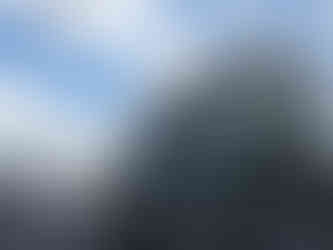






























































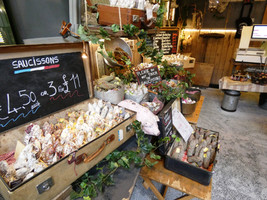

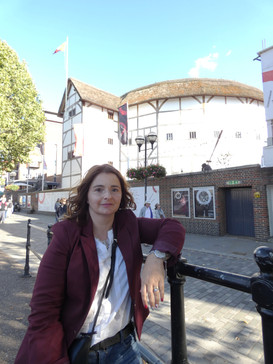







































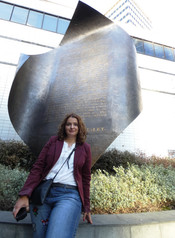











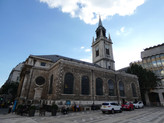













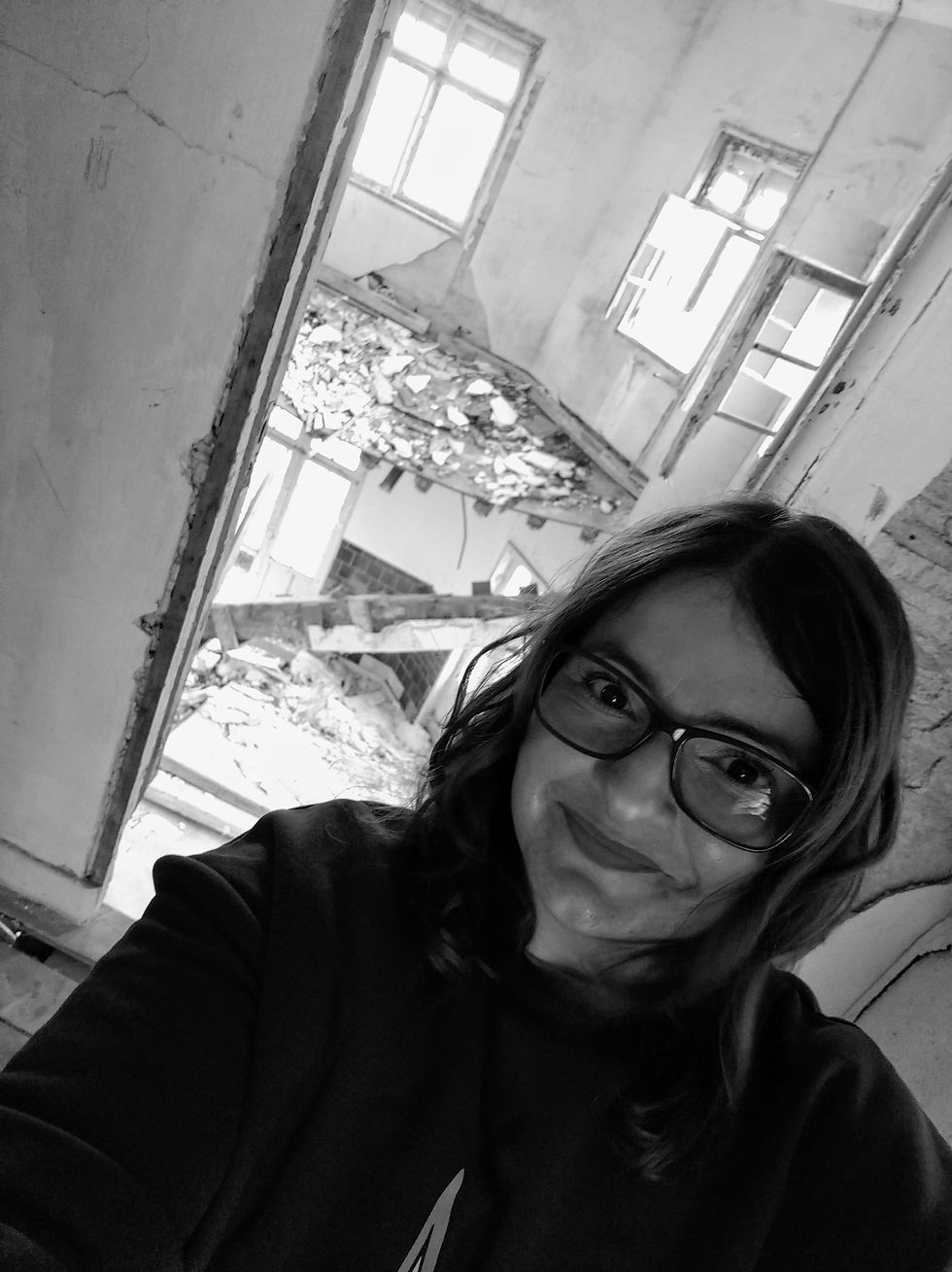

uf kkkkkkkkkkk titi sónia acho que era mais ir a londres e vir.....kisss